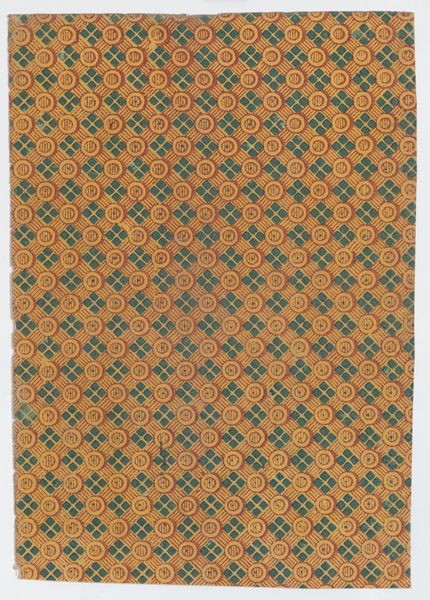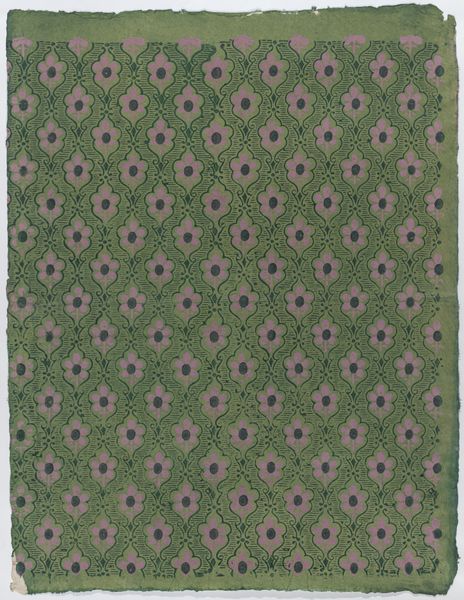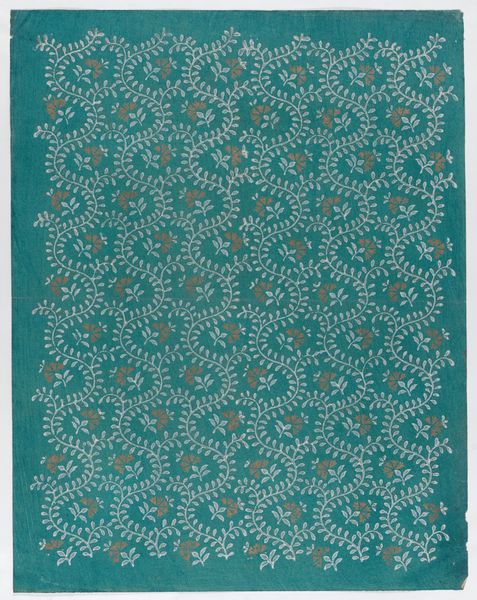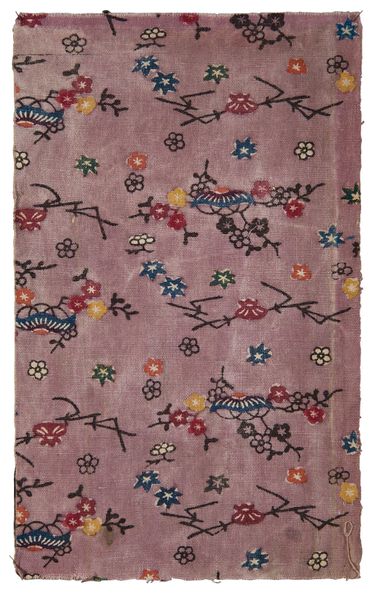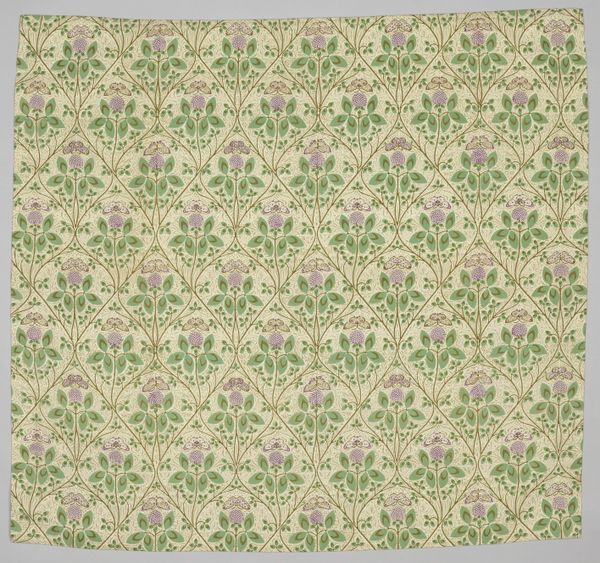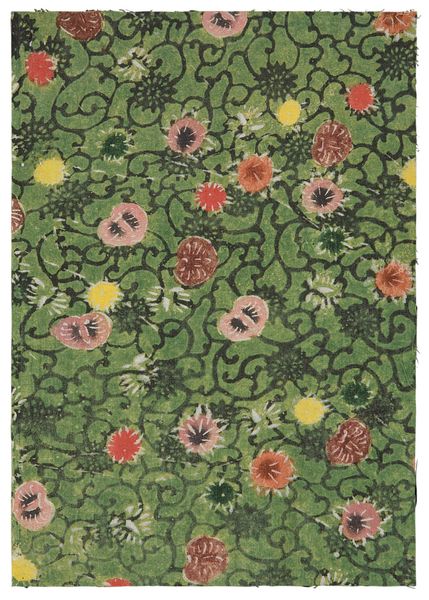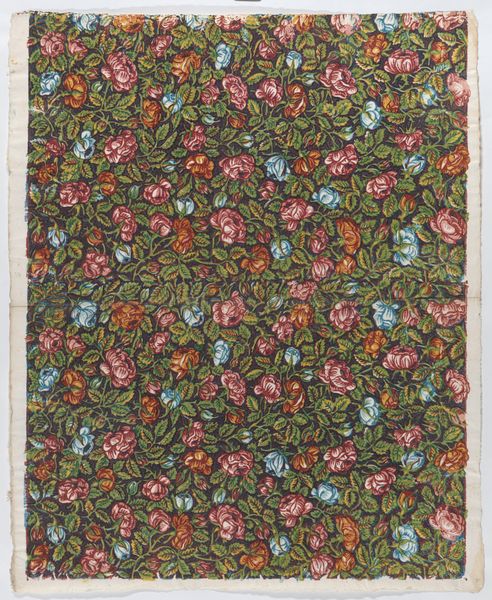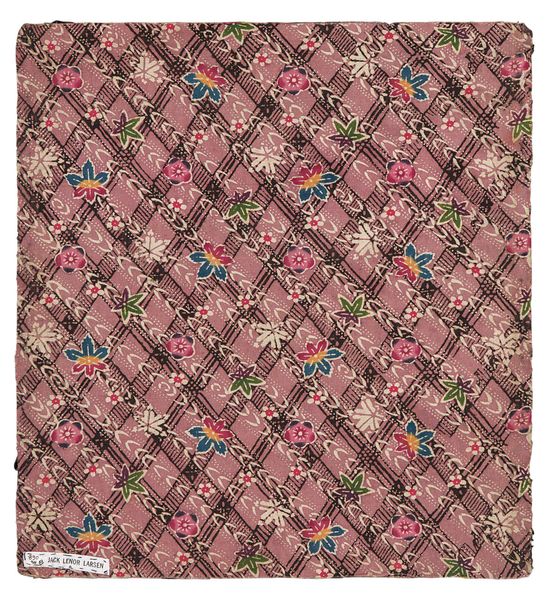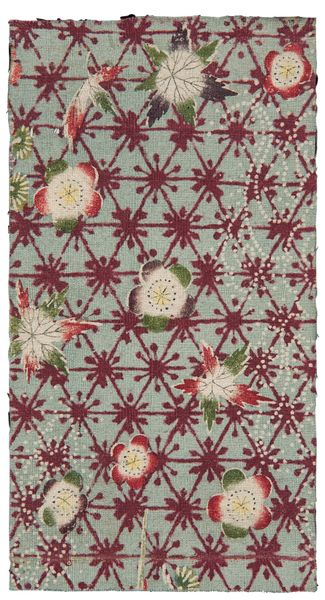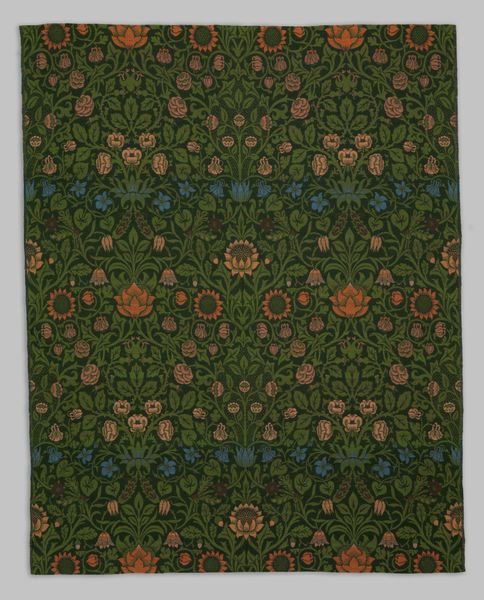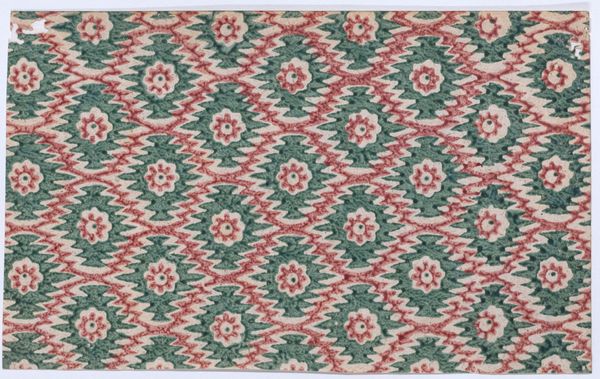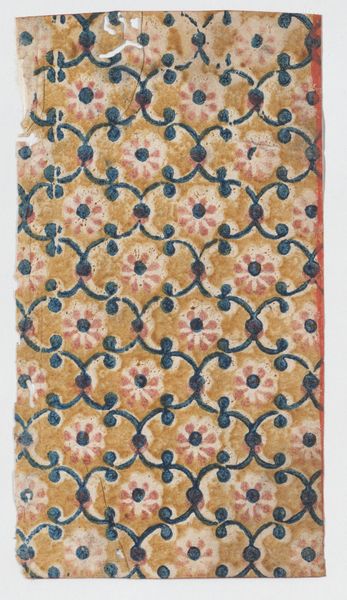
Fragment with motif of green and white dots with flowers c. 19th century
0:00
0:00
textile
#
naturalistic pattern
#
textile
#
fashion and textile design
#
pattern background
#
pattern design
#
repetition of pattern
#
pattern repetition
#
textile design
#
imprinted textile
#
layered pattern
#
combined pattern
Dimensions: 18 7/8 × 6 1/2 in. (47.94 × 16.51 cm) (overall)
Copyright: Public Domain
Curator: Immediately, it evokes for me the feeling of strolling through a meticulously designed zen garden. The colors are muted and restful, almost whispering. Editor: That’s a beautiful association! We’re looking at a "Fragment with motif of green and white dots with flowers" from around the 19th century. It's currently held in the Minneapolis Institute of Art collection, a striking example of Japanese textile art. Curator: Japanese, yes! I can see it now. There’s an order to the pattern—a diamond grid with scattered small flowers—but the tiny variations feel organic, very unforced. It really breathes. Does this kind of textile have a symbolic function? Editor: Well, repeating floral motifs were certainly significant in Japanese visual culture, hinting at the transient beauty of nature and cycles of renewal, things of that sort. Textiles were crucial for displaying social status, personal expression, and of course, cultural identity, especially in kimonos. Each small motif would communicate meaning to those in the know. Curator: Absolutely. The pattern isn't just decoration; it's a language, woven into the cloth, and communicating something important. These pieces were so integral to Japanese society. Think about the immense time investment. I read that textiles had a sort of emotional depth in some contexts? Editor: I imagine so. The texture, even in a digital reproduction like this, feels tangible. It carries not just the artistry but the labor, and the story of its maker too, it’s intimate. The tiny imperfections, visible when you step up close to the real thing, bring it all to life and feel extremely comforting. Curator: Agreed. The subtle color palette and rhythmic patterns have an enduring appeal. You find this emphasis on controlled yet imperfect beauty across many art forms in the culture. It’s a testament to the piece’s symbolic endurance and visual poetry. Editor: Exactly. This "fragment", as they are calling it, offers us a window into the aesthetic sensibilities and intricate artistic processes from 19th-century Japan, it carries on and on through history and its preservation here in America.
Comments
No comments
Be the first to comment and join the conversation on the ultimate creative platform.
